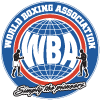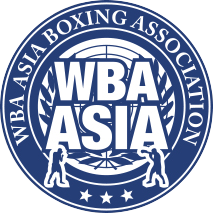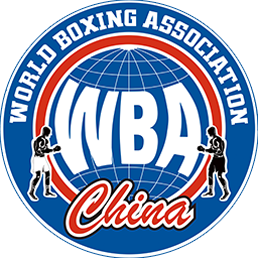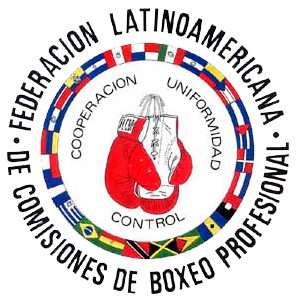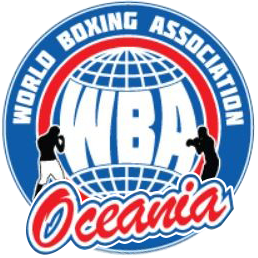The almost 22 thousand people who witnessed the Ali-Frazier fight, on March 8, 1971, at Madison Square Garden in New York, the former Mecca of boxing, bought their tickets at the exorbitant price of $25, as well as the nearly 300 million people who watched it in theaters and on closed circuit TV, in addition to the hundreds of millions who have watched it on video, do not hesitate to assure that there has never been, nor will there ever be, such an epic, memorable and interesting fight in history, only comparable, perhaps, to that of Ali vs. George Foreman on October 30, 1974, surprisingly won by KOT8 by the former.
That epic battle baptized as the Real Fight of the 20th Century between Muhammad Ali, the “Big Mouth”, who moved around the ring with his arms to the side of his body, and the hard-hitting Joe “Smokin” Frazier, owner of the best left hook in history, both undefeated, both the best heavyweights of their era, both bitter enemies in and out of the ring, both Olympic champions in the amateur, the first in Rome ’60, the other in Tokyo ’64.
BOXING, POLITICS, HATRED…
Despite the purely sporting aspect, the bout was a war with high political-social overtones. On one side were Joe Frazier’s supporters, the “good nigger”, the docile and good citizen respectful of the establishment, a fan of the homeland, supported by a large portion of his brothers and by the white supremacists, sarcastically called Uncle Tom and gorilla by his opponent that night and who showed up at the press conferences with a toy gorilla, among many other taunts to humiliate and intimidate him.
Ali, the challenger, had on his side the almost total majority of his skinned peers and a good part of the young anti-war white men, in solidarity with him for his adamant refusal to fight in Vietnam and who for that reason was seen, and indeed was, a fierce opponent of the ruling order, from the moment of his conversion to Islam four years earlier, which left him without crowns and in danger of going to prison for 4 years, from which he escaped thanks to the skill of his lawyers.
The position of his fight for civil and race rights was summed up in a brief sentence by Pennsylvania State University professor Amira Rose Davis:” He (Ali) was vilified for being outspoken, vilified for his opposition to the war and vilified for his connections to the Nation of Islam,” Davis argued, adding that “Frazier comes to symbolize a more complacent and conservative kind of America.” For his part, boxing historian Mike Silver indicated that “the fight was not just a prize fight. It had other dimensions; the dimensions of race, politics, the Vietnam War.”
This tense atmosphere in a country divided more by a racial and political than by a sporting stance, lasted during the 15 rounds, with both sides in permanent and heated discussions and cheers on both sides depending on what was happening in the ring.
Naturally, many celebrities from the world of show business (cinema, radio, theater, television), finance, politics… Everyone with a minimum of notoriety wanted to be there.
Thus, along with the more than 20,000 people who filled the Garden, there were dozens of personalities such as Barbra Streissand, Bob Dylan, Diana Ross, Hugh Hefner, Woody Allen, Diane Keaton, Dusty Hoffman; the famous actor Burt Lancaster–who served as an impossible-to-silence commentator for a TV channel alongside Howard Cosell–, the famous writer Norman Mailer, author of a chronicle of the fight, and a very special personality, the actor and singer Frank Sinatra, The Voice, hired by Life magazine as a photographer, a role he fulfilled discreetly in terms of the quality of his graphics.
There was also a very young Bob Arum, lawyer for the Kennedys and still today a famed promoter, and who years later would organize some 12-16 fights for Ali, whose lawyer he was in the fight. Arum was going to stage the fight, but gave up on the assumption that he would not be able to cover the expenses with S10 tickets. He summed up in a few words the climate surrounding the event by saying it was the meeting “of anger, irrationality, hatred”.
In November of the previous year Ali had returned to boxing to reclaim his fading fame as a gladiator. He was returning after an enforced absence since 1967. On April 28 of that year he had twice refused to step forward at the conscript headquarters in Houston, Texas, to go as a soldier to the Vietnam War. As a result he lost his boxing license from the New York Athletic Commission and was later stripped of the WBA-WBC and The Ring world belts, now held by Frazier.
Ali had won the belt for the first time on 2/25/64 at just over 22 years of age by TKO in the 6th against Sonny Liston and had 8 successful defenses, 6 of them by KO and in full swing. When he returned after 3 and a half years of inactivity and a tough legal battle, he defeated Jerry Quarry in three rounds on October 26, 1970 and by KO in 15 to the Argentine Oscar “Ringo” Bonavena on December 7 of the same year.
On March 8, Ali, 1.91 meters tall, 10 centimeters taller than his opponent, came up at 212 pounds, wearing red trunks and a record of 31 victories, 26 by KO, 29 years and 2 months old to face Frazier, 205.5 pounds, in green and gold, 27 years and 2 months, record of 26-0-0, 23 knockouts, to expose his WBA and WBC belts that had belonged to ALI and that he won in 4 rounds against Jimmy Ellis on February 16, 1970. Never before had two undefeated fighters battled for the heavyweight crown.
When the opening bell rang, as we said, about 300 million people were in movie theaters or in front of the TV and watched Ali dominate the first 2 rounds before being shaken and nearly dropped in the third round by one of Frazier’s devastating left hooks.
The next few rounds were a succession of grainy fire from both sides with the champion holding a slight but clear advantage. Ali at times retreated to evade the heavy blows of his opponent, who was relentless in his attacks. In the final round, the 15th, Frazier caught the challenger with his lethal southpaw cross and Ali collapsed like a sack stuffed with sawdust. Although he got up precariously within 8 seconds of the count, the fight was already decided.
Under the round-by-round scoring system the titleholder took the decision unanimously: the famous and legendary referee Arthur Mercante let 8-6-1 rounds by Frazier and judges Artie Aidala and Bill Retch voted 9-6 and 11-4, respectively, equally favorable to the champion.
It only remains to add that the two fighters went to such lengths in pursuit of victory that both went to the hospital for a couple of weeks, highly rewarded for the mishap with a purse, unthinkable in those distant days, of $2.5 million each paid by promoters Jerry Perenchio and Jack Kent Cooper, the latter then owner of the Los Angeles Lakers professional basketball team. Both grossed more than $11 million in ticket sales and telecast in theaters and on closed and open circuit in 370 sites in the U.S. as well as in Africa, Asia, Europe. Global gross income surpassed $45 million.
Shortly thereafter, at a lunch with Frazier, veteran boxing columnist Jerry Izemberg recounted that at the restaurant a little boy approached them to tell the champion that his dad had said at home that Ali “fought on drugs”. Frazier hugged the little boy, paternally, and told him that yes, he should tell his dad that “It’s true. He fought drugged, he was drugged with three left hooks.”
Three years later Ali and Frazier met for the second time, exactly on January 28, 1974 and the former took revenge in a tedious non-title fight, by unanimous decision at the same Madison, and in a third fight on October 1, 1975, Ali again finished with his arm raised at the Araneta Coliseum in Quezon City, Metro Manila, Philippines, when his opponent failed to come to the bell for the penultimate 14th round, surrendered by the scorching, violent scuffle and the 40-degree Celsius temperature. A couple of seconds later Ali collapsed in his corner. He told reporters afterward that he had “never been so close to death.”
Ali, the only one to have held the heavyweight championship three times (1964-74-78) ceased activity, surrounded by his colossal fame as a fighter (never equaled, not even close, by any other, until today), as well as a tireless fighter for his race and his religion, which he did after some 17 years in the ring between 1960 and 81, not counting the forced retirement for more than three years with a record 56-5-0, 37 knockouts for, one against and passed away in Scottsdale, Arizona, on June 3, 2016a t the age of 74 due to respiratory problems due to Parkinson.
Frazier fought from 1965-81 and left a record of 32 (27)-4 (3 KO)-1. Born in South Carolina , he died of liver cancer on November 7, 2011 at age 67 in his adopted hometown of Philadelphia, Pennsylvania.
Foreman never forgave Ali for the humiliating offenses Ali inflicted on him, yet he advocated for him to President Ronald Reagan to get his boxing license back.










